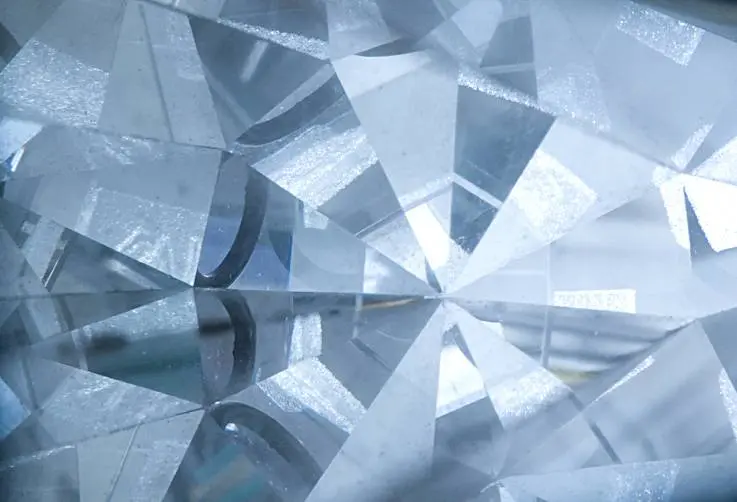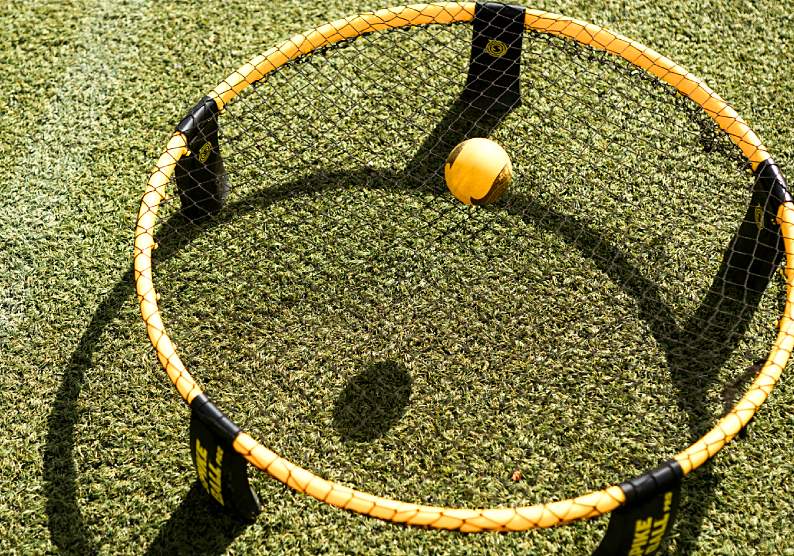words Al Woods

Are you on the hunt for the perfect diamond for your special someone or for yourself? Look no further because you’ve come to the right place. We know that choosing the right diamond can be overwhelming, but that’s why we’ve put together this Buyer’s Guide to Diamonds to help you pick the best one among the most popular diamond cuts out there.
Diamonds are not just a symbol of love and commitment but also a significant investment. So, it’s essential to pick the right diamond that’s not only beautiful but also valuable. With this guide, we aim to provide you with all the information you need to make an informed decision when purchasing a diamond.
We’ll be covering the 4Cs of diamonds, different diamond shapes and cuts, diamond certification and grading, buying from a reputable dealer, selecting the right setting, and diamond care and maintenance. By the end of this guide, you’ll feel confident in your ability to choose the perfect diamond for your needs and budget.
So, let’s dive into the world of diamonds and get started on finding that perfect gem.
The 4Cs of Diamonds
When it comes to buying a diamond, the 4Cs are a crucial aspect to understand. The 4Cs refer to cut, color, clarity, and carat weight, and each of these factors impacts a diamond’s overall value and appearance.
First up is the cut, which is arguably the most important factor in determining a diamond’s beauty. Cut refers to how well the diamond is cut and how well it reflects light. A well-cut diamond will have more sparkle and brilliance, making it more visually appealing. Diamond cuts are graded from excellent to poor, so it’s important to choose the right cut to fit your budget.
Next is color, which refers to the presence of color in a diamond. Most diamonds appear colorless, but some can have a yellow or brown tint. Color is graded from D (colorless) to Z (light yellow or brown). The less color a diamond has, the more valuable it is.
Clarity is the third C, and it refers to the number of imperfections or inclusions in a diamond. Inclusions are tiny internal flaws that can affect the diamond’s appearance and value. The clarity scale ranges from Flawless (no inclusions) to Included (visible inclusions). The more flawless the diamond, the higher the value.
Finally, carat weight is the measurement of a diamond’s weight. One carat is equivalent to 0.2 grams, and a diamond’s carat weight affects its overall value. However, two diamonds of the same weight can have different values depending on their other 3Cs.
By understanding the 4Cs and how they affect a diamond’s value and appearance, you can choose the right diamond that fits both your budget and your aesthetic preferences. In the next section, we’ll discuss different diamond shapes and cuts and how they can impact a diamond’s overall appearance.
Diamond Shape & Size
Diamonds come in a variety of shapes and cuts, each with its own unique beauty and characteristics. The shape of a diamond refers to its outline when viewed from the top, while the cut of a diamond refers to its proportions, symmetry, and polish.
One of the most popular diamond shapes is the round brilliant cut, which is designed to maximize the diamond’s sparkle and fire. Round diamonds are versatile and work well in many different settings, making them a popular choice for engagement rings.
Another popular shape is the princess cut, which is square in shape and has pointed corners. Princess cut diamonds are known for their brilliance and fire and are a great option for those who want a modern and elegant look.
If you’re looking for something more vintage, consider a cushion-cut diamond. Cushion-cut diamonds have rounded corners and large facets, giving them a soft and romantic appearance.
Other popular diamond shapes include the emerald cut, the oval cut, and the pear cut. Each shape has its own unique character, and it’s essential to choose the one that best fits your personal style and the type of jewelry you’re purchasing.
In addition to shape, the cut of a diamond is also an important consideration. A well-cut diamond will have more sparkle and brilliance, making it more visually appealing. The quality of a diamond’s cut is graded from excellent to poor, and it’s important to choose a cut that fits both your budget and your aesthetic preferences.
In the next section, we’ll discuss the importance of diamond certification and grading and how to interpret a diamond grading report.
Diamond Certification and Grading
When purchasing a diamond, it’s essential to make sure that it’s been certified and graded by a reputable third-party organization. Diamond certification and grading ensure that you’re getting a diamond that meets certain quality standards and is accurately represented by the seller.
The most well-known and respected diamond grading organizations are the Gemological Institute of America (GIA) and the American Gem Society (AGS). These organizations evaluate diamonds based on the 4Cs and issue a grading report that details the diamond’s characteristics, including its cut, color, clarity, and carat weight.
A diamond grading report is a vital tool for understanding the quality and value of a diamond. It’s important to review the report carefully and make sure that the information matches the diamond you’re considering. If a seller is hesitant to provide a grading report or claims that their diamonds are certified by a lesser-known organization, it’s a red flag that the diamond may not be of the quality they claim.
In addition to the 4Cs, some diamond grading reports also include a fifth C, which stands for “conflict-free.” Conflict-free diamonds are diamonds that have been ethically sourced and don’t come from areas where diamond mining is associated with human rights violations or environmental damage. Many consumers prefer to purchase conflict-free diamonds as a way of ensuring that their diamond purchase is not contributing to unethical or illegal practices.
By choosing a diamond that has been certified and graded by a reputable organization, you can be confident that you’re getting a diamond that meets high quality standards and accurately represents its characteristics. In the next section, we’ll discuss the importance of buying from a reputable dealer and how to avoid purchasing a fake or misrepresented diamond.
Buying from a Reputable Dealer
When buying a diamond, it’s important to purchase from a reputable dealer that you can trust. Buying from a reputable dealer ensures that you’re getting a high-quality diamond that has been accurately represented and priced fairly.
One of the best ways to find a reputable diamond dealer is to do your research. Look for dealers that have a good reputation in the industry and positive reviews from past customers. You can also check if the dealer is a member of a professional organization like the Jewelers of America or the Diamond Council of America, which requires its members to adhere to ethical and professional standards.
Another important consideration when choosing a diamond dealer is their return policy. A reputable dealer should have a fair and transparent return policy that allows you to return a diamond if you’re not satisfied with it. If a dealer doesn’t offer a return policy or has an overly complicated or restrictive policy, it may be a red flag that they’re not a reputable dealer.
It’s also important to be wary of deals that seem too good to be true. If a dealer is offering a diamond at an unusually low price, it may be a sign that the diamond is fake or misrepresented. Always be sure to ask for a grading report and carefully review the diamond’s characteristics to ensure that it’s accurately represented.
Lastly, don’t be afraid to ask questions and educate yourself before making a purchase. A reputable dealer should be willing to answer your questions and provide you with the information you need to make an informed decision.
By purchasing from a reputable dealer, you can be confident that you’re getting a high-quality diamond that meets your expectations and has been accurately represented. In the final section, we’ll summarize the key points to keep in mind when buying a diamond.
Choosing the Right Setting
When buying a diamond, it’s essential to consider the setting in which it will be placed. The right setting can enhance the beauty of the diamond and create a cohesive and stylish piece of jewelry.
One of the most important factors to consider when choosing a setting is the metal type. Popular options include platinum, white gold, yellow gold, and rose gold, each with its own unique appearance and properties. Platinum is a durable and hypoallergenic option that complements the brilliance of diamonds, while gold is a classic and versatile option that adds warmth and richness to a piece.
Another consideration is the style of the setting. A solitaire setting, which features a single diamond in a simple and elegant design, is a timeless and popular choice for engagement rings. Other options include halo settings, which surround the center diamond with smaller diamonds, and vintage-inspired settings, which feature intricate details and filigree work.
It’s also important to consider the practicality of the setting. If the diamond will be worn daily, a setting with a low profile and secure prongs is essential to protect the diamond from damage or loss. Additionally, a setting that allows for easy cleaning and maintenance is ideal to keep the diamond looking its best.
Lastly, consider your personal style and preferences when choosing a setting. The setting should reflect your unique taste and personality and complement your wardrobe and lifestyle.
By choosing the right setting, you can create a stunning piece of jewelry that showcases your diamond and reflects your personal style. In the final section, we’ll summarize the key points to keep in mind when buying a diamond.
Diamond Care and Maintenance
Proper care and maintenance are essential to keep your diamond looking its best and ensure that it lasts for a lifetime. Here are some tips for taking care of your diamond:
- Clean your diamond regularly: Dirt and oils can build up on a diamond over time, diminishing its brilliance and shine. Clean your diamond regularly with a soft-bristled brush and a mild detergent to keep it looking its best.
- Store your diamond carefully: When you’re not wearing your diamond, store it in a secure and dry place, such as a jewelry box or a safe. Avoid storing it with other jewelry or in a place where it could get scratched or damaged.
- Avoid exposing your diamond to harsh chemicals: Harsh chemicals, such as bleach and chlorine, can damage a diamond and its setting. Be sure to remove your diamond jewelry before engaging in activities that involve exposure to chemicals, such as swimming or cleaning.
- Get your diamond checked and serviced regularly: Even with proper care, a diamond can still become damaged or loose over time. It’s important to have your diamond checked and serviced regularly by a professional jeweler to ensure that it’s in good condition and secure in its setting.
By following these simple tips, you can keep your diamond looking its best and ensure that it lasts for a lifetime. In the final section, we’ll summarize the key points to keep in mind when buying a diamond.
Wrapping Up
Buying a diamond is an exciting and meaningful investment that requires careful consideration and research. By understanding the 4Cs of diamonds, the various shapes and cuts, the importance of certification and grading, the benefits of buying from a reputable dealer, and how to choose the right setting and care for your diamond, you can make an informed decision that meets your needs and preferences.
When shopping for a diamond, take your time, do your research, and don’t be afraid to ask questions. A reputable dealer will be happy to provide you with the information you need to make an informed decision and ensure that you’re getting a high-quality diamond that meets your expectations.
Remember, a diamond is more than just a piece of jewelry; it’s a symbol of love, commitment, and beauty that lasts a lifetime. By choosing a diamond that is the right fit for you, you can create a piece of jewelry that you’ll cherish for years to come.
We hope this buyer’s guide has been helpful in providing you with the information you need to make an informed decision when purchasing a diamond. Remember to take your time, do your research, and enjoy the process of finding the perfect diamond for you.




